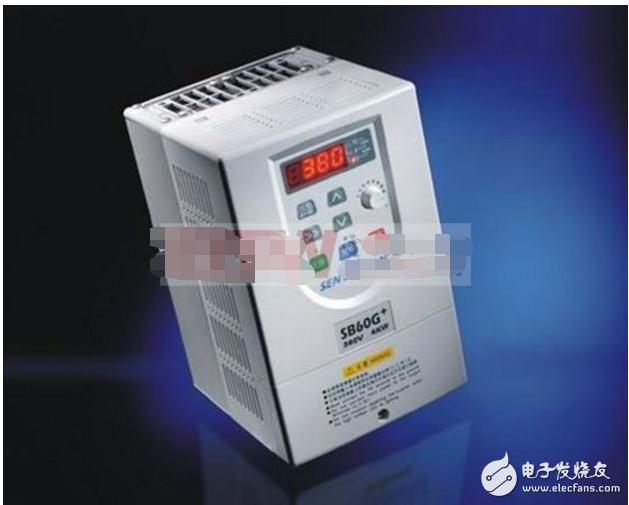The general-purpose inverter with vector control can not only match the DC motor in the speed regulation range, but also control the torque generated by the asynchronous motor. Since the vector control method is based on the parameters of the accurately controlled asynchronous motor, some general-purpose inverters need to accurately input the parameters of the asynchronous motor when they are used, and some general-purpose inverters need to use the speed sensor and the encoder. In view of the possibility that the motor parameters may change, it will affect the control performance of the inverter to the motor, and adjust the relevant parameters in the control algorithm according to the identification result, so as to effectively vector control the ordinary asynchronous motor.

The development of asynchronous motor vector control variable frequency speed control system enables the speed regulation of asynchronous motor to obtain high precision and fast response performance comparable to that of DC motor. The mechanical structure of the asynchronous motor is simpler and stronger than the DC motor, and the rotor has no electrical contact points such as a carbon slip ring, so the application prospect is very broad. The advantages and application areas are summarized as follows:
1. Advantages of vector control system:The dynamic "speed response DC motor is limited by rectification. Excessive di/dt is not allowed. The asynchronous motor is only limited by the capacity of the inverter. The multiple of the forced current can be achieved very high, so the speed response is fast. It reaches the millisecond level and has exceeded the DC motor in terms of speed.
Low-frequency torque increase Generally, the general-purpose inverter (VVVF control) often has a lower torque than the rated torque at low frequencies, and cannot work with full load below 5 Hz. However, the Yaw-controlled inverter can keep the magnetic flux constant, and the torque has a linear relationship with it. Therefore, the torque of the motor can be higher than the rated torque at extremely low frequencies.
Controlled flexibility DC motors are often used in the form of shunt, series, and re-excitation depending on the load object. They each have different control characteristics and mechanical properties. In the asynchronous motor vector control system, the same motor can be output with different characteristics. The mechanical properties of a separately excited or series-excited DC motor can be obtained by using different function generators as flux regulators in the system.
Using vector control, the output torque of the motor at low speed, such as (without speed sensor) 1Hz (for a 4-pole motor with a speed of about 30r/min) can reach the torque of the motor at 50Hz power supply output (most It is 150% of rated torque).
For conventional V/F control, the voltage drop of the motor increases relatively as the motor speed decreases, which results in the motor not being able to obtain sufficient rotational force due to insufficient excitation. In order to compensate for this deficiency, the inverter needs to increase the voltage to compensate for the voltage drop caused by the motor speed reduction. This function of the inverter is called "torque boost".
The torque boost function is to increase the output voltage of the inverter. However, even if a lot of output voltage is increased, the motor torque cannot be increased corresponding to its current. Because the motor current contains the torque component generated by the motor and other components (such as the excitation component).
The vector control distributes the current value of the motor to determine the value of the motor current component and other current components (such as the excitation component) that produce the torque.
The vector control can be optimally compensated by responding to the voltage drop at the motor end, allowing the motor to produce large torque without increasing the current. This function is also effective for improving the temperature rise of the motor at low speeds.
2. Application range of vector control systemWork machines that require high-speed response: For example, industrial robot drive systems require at least 100 rad/s in speed response, and vector control drive systems can achieve speed response up to 1000 rad/s, ensuring fast and accurate operation of the robot drive system.
Adapt to the harsh working environment: such as paper machine, dyeing machine are required to work in high humidity, high temperature and corrosive gas environment, asynchronous motor is more suitable than DC motor.
3, high-precision electric drag: such as steel plate and wire coiler belongs to constant tension control, has high requirements for dynamic and static accuracy of electric drive, can achieve high speed (weak magnetic), low speed (jog ), forced braking when parking. After the vector control of the asynchronous motor is applied, the static difference is 0.02%, and it is possible to completely replace the VM DC speed control system.
4, four quadrant operation: such as the drag of high-speed elevators, in the past have used DC drag, and now gradually replaced by asynchronous motor vector control variable frequency speed control system.
Vcsel Chip,Vcsel Laser Diodes,Round Laser Diode,Miter Saw Dual Laser
AcePhotonics Co.,Ltd. , https://www.acephotonics.com
